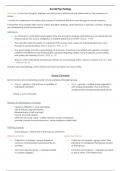Social Psychology
The study of how the thoughts, feelings, and behavior of individuals are influenced by the presence of
others.
- It seeks to understand the nature and causes of individual behavior and thought in social situations.
It examines how people affect each other's thoughts, feelings, and behaviors in specific contexts, shaping
and interpreting social environments.
Definitions:
• An attempt to understand and explain how the thoughts, feelings, and behaviour of individuals are
influenced by the actual, imagined, or implied presence of others (Allport, 1968)
• The scientific field that seeks to understand the nature and causes of individual behaviour and
thought in social situations (Baron & Byrne, 1997, p. 6)
• Any psychology must be a psychology of a society, it must be concerned with specific contexts,
contexts inhabited by real living people, people inhabiting bodies, living in specific communities,
with particular histories (Ratele, 2003, p. 13)
• Ways in which individuals and groups interact as social beings within various contexts (Stevens, 2021
– Intro to Part 6)
Humans are social beings, which means we have an impact on each other.
Group Concepts
Since humans are social being, social nature expressed through groups.
• Allport – groups = the mixture of qualities of • Asch – groups = unique social organisms,
individual members with unique properties, that cannot be
understood by studying individuals alone.
Whole > sum of its parts
Reasons for belonging in a Group:
- need for affiliation + love belonging.
- role in influencing self-esteem
- development of self-concept
- source of social support
- offer info of social world – satisfy need for social comparison.
- provide context to pool resources + solve problems collectively.
Defining a group
Social groups – interaction is the basis on existence.
Objective Factor Subjective Factors
• Collection of people = group based on • Collection of people = group when they
common characteristics perceived by an perceive or categorise themselves as part
outsider of that group.
• Common-identity group – members linked • Common-bond group – members bonded
to overall category. to each other; f-2-f interactions
, 3 characteristics define social groups:
1.interdependence 2.interaction 3.mutual influence
Types of Social Groups:
In-group (“Us”) Outgroup (“Them”)
• The group to which you belong, leading to • The group to which you do not belong,
a sense of identity. often associated with hostility.
.
Stages of Group Formation
1. Forming – Orientation → Familiar, group roles established, tentative communication, leader takes
dominant position.
2. Storming – Disagreement → Disagreement + tension, hostility, criticism, poor attendance.
3. Norming – Structure → Norms + roles, decrease tension, increase in cohesiveness + agreement.
4. Performing – Development → Groups unit achieve goals, increased cooperation + decision making.
5. Adjourning – Dissolution → Tasks are completed, roles end, group disintegrates, sadness + regret.
Characteristics of Small Groups
1. Purpose → implicit/explicit (indirect/direct), instrumental/affiliative.
2. Norms → prescriptive/proscriptive (recommended/forbidden behaviors), potential for
deindividuation (normative behavior weakened).
3. Roles and responsibilities → task roles/relationship roles.
4. Communication → communication network.
5. Status → ascribed/achieved (involuntary/voluntary).
6. Cohesiveness → high/low, mutual attraction, adherence to group norms, goal attainment).
Dynamics of small groups:
● Group Polarization: Pre-existing opinions become more extreme after group discussion due to normative
comparison, persuasive arguments, or informational influence.
● Groupthink: Faulty decision-making in highly cohesive groups more concerned with consensus than
considering alternatives. Likely to occur when the group is:
▪ Highly cohesive
▪ Isolated from important source info
▪ Biased leader + under decisional stress
● Social Facilitation: Improved individual task performance in the presence of others,
particularly for well-learned tasks.




